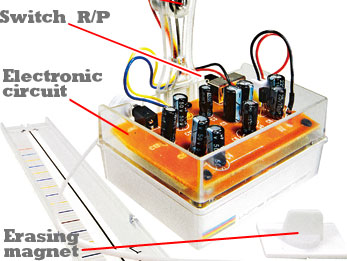 |
Using this replica of the magnetic recorder invented by Danish telephone engineer Valdemar Poulsen, you can record your voice onto wire and many other metallic items.
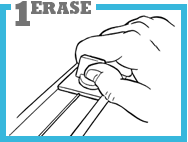 Using the erasing head, clear the metallic item of any residual magnetic information that it may contain. |
 |
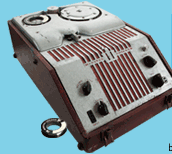 |
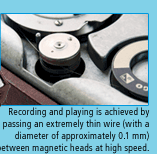 |
| The wire recorder is a magnetic recorder that was put to practical use before tape recorders. The history of these devices stretches back to 1898, when Danish telephone engineer Valdemar Poulsen created the world’s first recording on a strip of piano wire. These devices were imported into Japan, but they disappeared from sight without being put to widespread practical use. |
 |
|
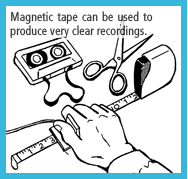
In addition to the wire included in the kit, you can use all kinds of household items such as scissors, saws, guitar strings, tape measures, and piano wires to record your own voice.
And just like a covert agent, you could even leave hidden messages for others.
|